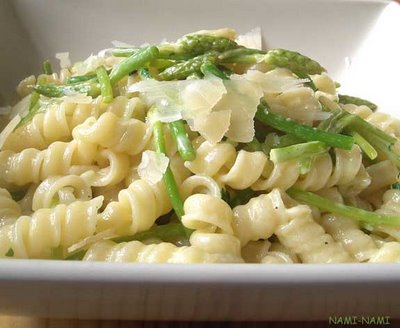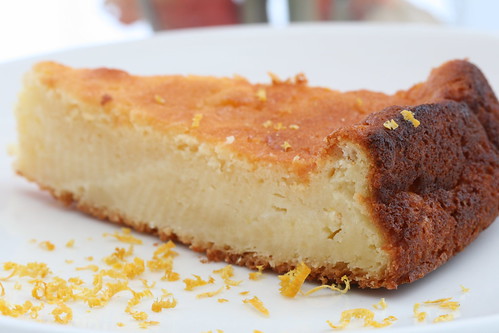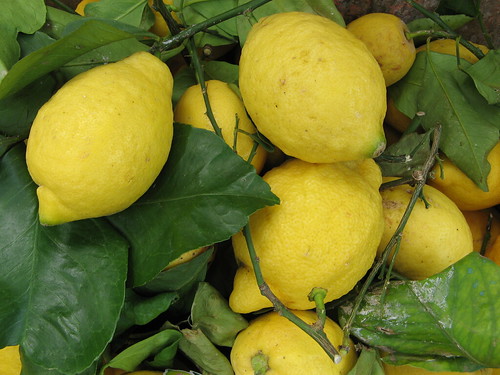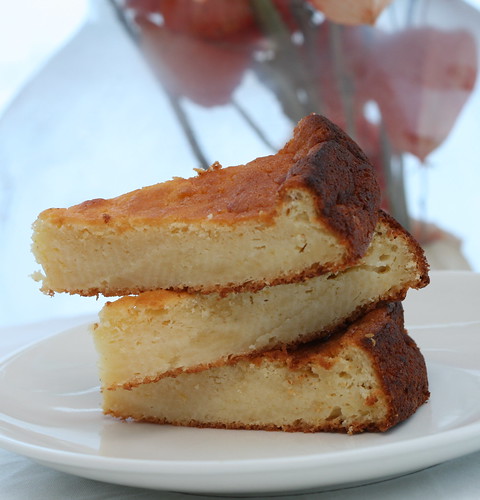We managed to squeeze some moderate sightseeing and one really cool concert (Lo'Jo) into our four days, but my first trip to Paris was definitely food-oriented. We spent coupe of hours wandering in La Grande Epicerie de Paris, had a wonderful meal at La Cave de l'Os à Moëlle, enjoyed a coffee and cake at 'Cafe Des Deux Moulins' in Montmartre (as part of the Amélie trail), visited Bastille Market (where I picked up some wild asparagus and fresh bay leaves), breakfasted at Bread & Roses next to Jardin du Luxembourg, paid a visit to E. Dehillerin, ate falafels at the Jewish Quarter and drank tea at Mariage Frères.
 And we made it to Ladurée. We climbed the stairs to the upstairs (much less crowded and non-smoking!) room of the original Ladurée branch at 16, Rue de Royale, where we were seated right next to the window. Having only just eaten breakfast, we weren't able to enjoy the rather delicious-sounding Le Brunch Ladurée (€33), but we treated ourselves to two cups of Café crème Ladurée and studied the menu. Although Pim declares the Ladurée Ispahan to be just a poor imitation of Pierre Hermé's version (and I'm sure she's right, although we didn't have a chance to compare the two this time), we decided to order it after all (Ispahan is a smooth rose flavoured macaroon biscuit, rose petal cream, fresh raspberries and lychees created by Pierre Hermé when he was working at Ladurée a while back). I must admit that Ispahan had a very unusual and intense flavour, which you wouldn't want to have too much of. But it was tasty and memorable nevertheless.
And we made it to Ladurée. We climbed the stairs to the upstairs (much less crowded and non-smoking!) room of the original Ladurée branch at 16, Rue de Royale, where we were seated right next to the window. Having only just eaten breakfast, we weren't able to enjoy the rather delicious-sounding Le Brunch Ladurée (€33), but we treated ourselves to two cups of Café crème Ladurée and studied the menu. Although Pim declares the Ladurée Ispahan to be just a poor imitation of Pierre Hermé's version (and I'm sure she's right, although we didn't have a chance to compare the two this time), we decided to order it after all (Ispahan is a smooth rose flavoured macaroon biscuit, rose petal cream, fresh raspberries and lychees created by Pierre Hermé when he was working at Ladurée a while back). I must admit that Ispahan had a very unusual and intense flavour, which you wouldn't want to have too much of. But it was tasty and memorable nevertheless.My date K. and I also shared four macaroons between us:

Cassis violette/Blackcurrant violet (a seasonal flavour), Pétales de rose/Rose petal, Caramel à la fleur de sel/Salted butter Caramel, Gingembre citron vert/Lime & Ginger. We both agreed that the lime & ginger version was our favourite, followed by the unusually moist blackcurrant violet macaroon (him) and salted butter caramel (me). Rose was most unimpressive of the lot, but maybe because we had already had enough rosewater in the form of Ispahan.
Next time we'll pay a visit to Pierre Hermé (shall we, K?) ;-)



















